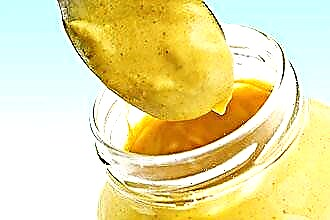Mustard plaster (mustard patch) is a local irritating agent that helps to eliminate the symptoms of the common cold. A porous bag filled with mustard powder is used to warm fabrics. A local increase in temperature stimulates blood circulation, due to which tissue trophism is normalized. Acceleration of blood microcirculation in the affected mucous membranes leads to an acceleration of regeneration processes, which subsequently stimulates an increase in local immunity.
 Using mustard plasters for a cold, you can accelerate the regression of inflammatory processes in the nasopharynx. The acceleration of metabolic processes due to intense blood circulation leads to a decrease in the viscosity of mucus. Thus, the process of evacuation of liquid secretions from the nasal sinuses is accelerated, which makes it possible to facilitate nasal breathing.
Using mustard plasters for a cold, you can accelerate the regression of inflammatory processes in the nasopharynx. The acceleration of metabolic processes due to intense blood circulation leads to a decrease in the viscosity of mucus. Thus, the process of evacuation of liquid secretions from the nasal sinuses is accelerated, which makes it possible to facilitate nasal breathing.
Operating principle
When in contact with the skin, mustard patches dilate the blood vessels, which leads to an acceleration of blood circulation. The therapeutic properties of the agent are due to the presence of essential oil in the mustard composition, which has a local irritating effect. Normalization of blood microcirculation in the ciliated epithelium lining the surface of the nasopharynx promotes the outflow of lymph from the lesions.
With a decrease in the swelling of the mucous membranes, the patency of the airways increases, as a result of which nasal breathing is facilitated. In addition, mustard plasters activate metabolic processes in the body, thereby increasing its reactivity. An increase in body temperature stimulates the production of neutrophils, which inhibit the development of pathogenic flora in the foci of inflammation. Regular carrying out of the procedure contributes to the speedy resolution of inflammatory processes in the nasopharyngeal mucosa.
Application features
Where to put mustard plasters with a cold? Failure to comply with the rules for the use of mustard plasters can lead to a deterioration in well-being. To relieve the symptoms of acute rhinitis, experts recommend putting mustard patches on:
- back;
- the back of the head;
- breast;
- feet.
Important! It is undesirable to apply a plaster on the nipples, heart area and spine.
The principles of treatment for adults and children have several significant differences, due to the hypersensitivity of the skin in preschool children. To prevent the occurrence of burns and an allergic reaction in a child, it is more advisable to apply a warming plaster on the feet. The skin of the feet is quite thick and tough, which prevents the deep penetration of essential oils deep into the dermis. It is rich in sweat glands, which contributes to the intensive excretion of metabolites of the pathogenic flora from the body.
Instructions
According to ENT doctors, the competent use of mustard patches helps to eliminate not only the signs of a runny nose, but also inflammatory processes in the pharyngeal mucosa. For this reason, it is recommended to perform warming up in the event of the development of laryngotracheitis, bronchitis, acute rhinitis, ARVI, etc. In order to achieve the desired therapeutic results, the following recommendations of doctors should be taken into account during the procedure:
- place the mustard patch in warm water for 15 seconds;
- shake the patch to remove excess liquid;
- put mustard plasters on your feet;
- blot your feet with a cotton cloth;
- wear warm socks.
Important! If a strong burning sensation occurs in the area of the feet, remove the patch and treat the skin with a hypoallergenic cream.
The duration of the procedure is largely determined by the age of the patient and the severity of the course of a cold. As a rule, when treating children, the duration of the procedure is 5-7 minutes.
Treatment of children
 Due to the increased sensitivity of children's skin to external factors, the principles of using mustard plasters in the treatment of children have several important differences. It is recommended to put the patch on the feet with the back side to reduce the intensity of tissue heating. Otherwise, before using the bag with mustard, a cotton cloth soaked in vegetable oil should be applied to the treated area of the skin.
Due to the increased sensitivity of children's skin to external factors, the principles of using mustard plasters in the treatment of children have several important differences. It is recommended to put the patch on the feet with the back side to reduce the intensity of tissue heating. Otherwise, before using the bag with mustard, a cotton cloth soaked in vegetable oil should be applied to the treated area of the skin.
To prevent burns, the following rules must be observed during the procedure:
- Steam your feet in salted water before using the warming patch;
- perform the procedure every day before going to bed for at least 5 days in a row;
- after using mustard plasters, wash off the remnants of mustard from the skin;
- Put warm socks on your feet before bed.
With a severe cold, experts advise using mustard foot baths, which is due to their reflex action. Under the influence of hot water, the vessels in the legs expand, as a result of which there is an outflow of lymph and blood from the mucous membranes of the ENT organs. Due to this, swelling in the nasal passages decreases, which leads to better nasal breathing.
Recommendations of doctors
Using mustard plasters for a cold, you need to take into account not only the time of one procedure, but also the duration of the entire course of therapy. The rate of regression of inflammatory processes in the nasopharyngeal mucosa largely depends on the regularity of warming up the feet. To speed up the healing process, doctors advise taking into account the following recommendations:
- the course of therapy should not exceed 7 days;
- the procedure can be performed no more than 2 times a day;
- when the feet are first warmed up, the duration of the procedure should not exceed 4-5 minutes;
- with each subsequent session, the duration of thermotherapy can be increased by 1 minute;
- the maximum heating time of the skin is 10-12 minutes.
In the absence of positive dynamics or deterioration in health, it is advisable to seek help from a specialist. Untimely relief of inflammatory processes in the nasopharynx can lead to the development of sinusitis.
It is not recommended to go outside for several hours after the procedure. For this reason, it is more advisable to put mustard layers before bedtime. This helps to prolong the healing effect and accelerate the healing process.
Contraindications
Despite the pronounced therapeutic effect of mustard patches, they can be used only on the recommendation of a specialist. Ignoring contraindications often causes complications such as purulent inflammation in the paranasal sinuses, abscess of the mucous membrane in the nasal passages, etc. Direct contraindications for warming up are:
- hyperthermia;
- age up to 1 year;
- furunculosis;
- neoplasms on the skin;
- tendency to allergies;
- eczema;
- dermatitis;
- bronchial asthma.
Doctors warn that the presence of disturbances in the work of the central nervous system can cause severe burns. The disturbed innervation of the skin leads to a decrease in the sensitivity of pain receptors. As a result, even with strong heat exposure to the skin, the patient may not feel discomfort. Intensive heating of tissues leads to denaturation of proteins in cellular structures, resulting in damage that is difficult to regenerate.



